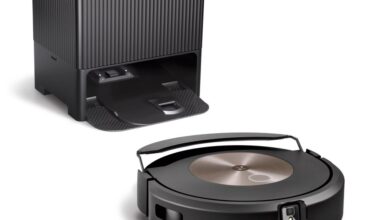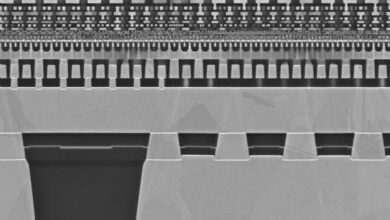Honoring the Legacy of Chip Design Innovator Lynn Conway

Lynn Conway, codeveloper of very-large-scale integration, died on 9 June at the age of 86. The VLSI process, which creates integrated circuits by combining thousands of transistors into a single chip, revolutionized microchip design.
Conway, an IEEE Fellow, was transfeminine and was a transgender-rights activist who played a key role in updating the IEEE Code of Conduct to prohibit discrimination based on sexual orientation, gender identity, and gender expression.
She shared her experiences on a blog to help others considering or beginning to transition their gender identity. She also mentored many trans people through their transitioning.
“Lynn Conway’s example of engineering impact and personal courage has been a great source of inspiration for me and countless others,” Michael Wellman, a professor of computer science and engineering at the University of Michigan in Ann Arbor, told the Michigan Engineering News website. Conway was a professor emerita at the university.
The profile of Conway below is based on an interview The Institute conducted with her in December.
Some engineers dream their pioneering technologies will one day earn them a spot in history books. But what happens when your contributions are overlooked because of your gender identity?
If you’re like Lynn Conway—who faced that dilemma—you fight back.
Conway helped develop very-large-scale integration: the process of creating integrated circuits by combining thousands of transistors into a single chip. VLSI chips are at the core of electronic devices used today. The technology provides processing power, memory, and other functionalities to smartphones, laptops, smartwatches, televisions, and household appliances.
She and her research partner Carver Mead developed VLSI in the 1970s while she was working at Xerox’s Palo Alto Research Center, in California. Mead was an engineering professor at CalTech at the time. For years, Conway’s role was overlooked partly because she was a woman, she asserts, and partly because she was transfeminine.
Since coming out publicly in 1999, Conway has been fighting for her contributions to be recognized, and she’s succeeding. Over the years, the IEEE Fellow has been honored by a variety of organizations, most recently the National Inventors Hall of Fame, which inducted her last year almost 15 years after it recognized Mead.
From budding physicist to electrical engineer
Conway initially was interested in studying physics because of the role it played in World War II.
“After the war ended, physicists became famous for blowing up the world in order to save it,” she says. “I was naive and saw physics as the source of all wisdom. I went off to MIT, not fully understanding the subject I chose to major in.”
She took many electrical engineering courses because, she says, they allowed her to be creative. It was through those classes that she found her calling.
She left MIT in 1957, then earned bachelor’s and master’s degrees in electrical engineering from Columbia in 1962 and 1963. While at Columbia, she conducted an independent study under the guidance of Herb Schorr, an adjunct professor and a researcher at IBM Research in Yorktown Heights, N.Y. The study involved installing a list-processing language on the IBM 1620 computer, “which was the most arcane machine to attempt to do that on,” she says laughing. “It was a cool language that Maurice Wilkes from Cambridge had developed to experiment with self-compiling compilers.”
She must have made quite an impression on Schorr, she says, because after she earned her master’s degree, he recruited her to join him at the research center. While working on the advanced computing systems project there, she invented multiple-out-of-order dynamic instruction scheduling, a technique that allows a CPU to reorder instructions based on their availability and readiness instead of following the program order strictly.
That work led to the creation of the superscalar CPU, which manages multiple instruction pipelines to execute several instructions concurrently.
The company eventually transferred her to its offices in California’s Bay Area.
Although her career was thriving, Conway was struggling with gender dysphoria, the distress people experience when their gender identity differs from their sex assigned at birth. In 1967 she moved forward with gender-affirming care “to resolve the terrible existential situation I had faced since childhood,” she says.
She notified IBM of her intention to transition, with the hope the company would allow her to do so quietly. Instead, IBM fired her, convinced that her transition would cause “extreme emotional distress in fellow employees,” she says. (In 2020 the company issued an apology for terminating her.)
After completing her transition, at the end of 1968 Conway began her career anew as a contract programmer. By 1971 she was working as a computer architect at Memorex in Silicon Valley. She joined the company in what she calls “stealth mode.” No one other than close family members and friends knew she was transfeminine. Conway was afraid of discrimination and losing her job again, she says. Because of her decision to keep her transition a secret, she says, she could not claim credit for the techniques she had invented at IBM Research because they were credited to the name she had been assigned at birth, her “dead name.”
She was recruited in 1975 to join Xerox PARC as a research fellow and manager of its VLSI system design group.
It was there that she made history.
Conway was recruited in 1975 to join Xerox PARC as a research fellow.Lynn Conway
Starting the Mead and Conway Revolution
Concerned with how Moore’s Law would affect the performance of microelectronics, the Advanced Research Project Agency (now known as the Defense Advanced Research Projects Agency) created a coalition of companies and research universities, including PARC and CalTech, to improve microchip design. After Conway joined PARC’s VLSI system design group, she worked closely with Carver Mead on chip design. Mead, now an IEEE Life Fellow, is credited with coining the term Moore’s Law.
Making chips at the time involved manually designing transistors and connecting them with circuits. The process was time-consuming and error-prone.
“A whole bunch of different pieces of design were being done at different abstraction levels, including the basic architecture, the logic design, the circuit design, and the layout design—all by different people,” Conway said in a 2023 IEEE Annals of the History of Computing interview. “And the various people in the different layers passed the design down in kind of a paternalistic top-down system. The people at any one layer may have no clue what the people at the other levels in that system are doing or what they know.”
Conway and Mead decided the best way to address that communication problem was to use CAD tools to automate the process.
The two also introduced the structured-design method of creating chips. It emphasized high-level abstraction and modular design techniques such as logic gates and modules—which made the process more efficient and scalable.
Conway also created a simplified set of rules for chip design that enabled the integrated circuits to be numerically encoded, scaled, and reused as Moore’s Law advanced.
The method was so radical, she says, that it needed help catching on. Conway and Mead wrote Introduction to VLSI Systems to take the new concepts straight to the next generation of engineers and programmers. The textbook included the basics of structured designs and how to validate and verify them. Before its publication in 1980, Conway tested how well it explained the method by teaching the first VLSI course in 1978 at MIT.
The textbook was successful, becoming the foundational resource for teaching the technology. By 1983 it was being used by nearly 120 universities.
Conway and Mead’s work resulted in what is known as the Mead and Conway Revolution, enabling faster, smaller, and more powerful devices to be developed.
Throughout the 1980s, Conway and Mead were known as the dynamic duo that created VLSI. They received multiple joint awards including the Electronics magazine 1981 Award for Achievement, the University of Pennsylvania’s 1984 Pender Award, and the Franklin Institute’s 1985 Wetherill Medal.
Conway left Xerox PARC in 1983 to join DARPA as assistant director for strategic computing. She led planning of the strategic computing initiative, an effort to expand the technology base for intelligent-weapons systems.
Two years later she began her academic career at the University of Michigan as a professor of electrical engineering and computer science. She was the university’s associate dean of engineering and taught there until 1998, when she retired.
Becoming an activist
In 1999 Conway decided to come out as a transfeminine engineer, knowing that not only would her previous work be credited to her again, she says, but also that she could be a source of strength and inspiration for others like her.
In the 2000s Conway’s honors began to dry up, while Mead continued to receive awards for VLSI, including a 2002 U.S. National Medal of Technology and Innovation.
After publicly coming out, she spoke openly about her experience and lobbied to be credited for her work.
Some organizations, including IEEE, began to recognize Conway. The IEEE Computer Society awarded her its 2009 Computer Pioneer Award. She received the 2015 IEEE/RSE Maxwell Medal, which honors contributions that had an exceptional impact on the development of electronics and electrical engineering.
IEEE Spectrum




